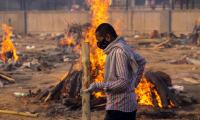LAHORE:The Higher Education Department (HED) Punjab has started continuous professional training of college teachers and college teaching interns (CTIs) across Punjab.
As per the details, under the training college teachers and CTIs will be trained each month for six subjects, including English, Mathematics, Economics, Commerce, Physics, Chemistry and Biology). Around 62 colleges in all the districts have been designated as cluster centres for continuous vocational training.
The District Subject Coordinators trained in each centre will train the teachers in the cluster. Training at all centres will be overseen by the HED and District Offices.
action against teachers: Federation of All Pakistan Universities Academic Staff Association (FAPUASA) Punjab has condemned the police action against university teachers and employees protesting against salary cuts in Balochistan.
In a joint statement, FAPUASA Punjab President Prof Dr Azhar Naeem, General Secretary Prof Dr Hafiz M Tahir, Vice-President Dr Ahtisham Ali and Secretary PUASA Dr Amjad Abbas Khan Magsi strongly condemned Balochistan police for using baton-charge against the peaceful protest of university teachers in front of the provincial assembly.
PCJCCI: Pakistan China Joint Chamber of Commerce and Industry hosted an awareness session on "Valorising the Economy: Connectivity Dividend" conducted by The Shahid Javed Burki Institute of Public Policy and Meta-agri Greater Venture Collective of Pakistan (MGVCP).
The event was attended by Mr Long Chunjiu, Chief Scientist of Longping South Asia Seed R&D Center, Mr Aksom Zaheer, Dr Renuka Thakore, Founder Global Sustainable Futures and others. Speaking on the occasion, BIPP Chairman Shahid Javed Burki, shared that the prime focus was on securing sustainable growth in renewed agriculture options to lessen the balance of trade deficit, in the backdrop of the lessons from the Chinese experience of poverty alleviation through exploiting agricultural resources, gender inclusion in agricultural practices and tapping on food demands of the 76 million people of the Central Asian States.
Police personnel detain supporters the Pakistan Tehreek-e-Insaf during a protest in Lahore on October 5, 2024. —...
Inspector General Police Punjab Dr Usman Anwar addressing an event on December 17, 2023. —...
Participants pose for a group photo during the 7th international conference on 'Mental Health and Rehabilitation:...
VC Punjab University Prof Dr Muhammad Ali Shah assumes charge as the VC of Government College University , Lahore,...
DG Youth Affairs and Sports Punjab Khizar Afzaal sits in a meeting image released on November 4, 2024. —...
DIG Muhammad Faisal Kamran seen in this image. — lahorepolice.punjab.gov.pk/file LAHORE : DIG Muhammad Faisal...







